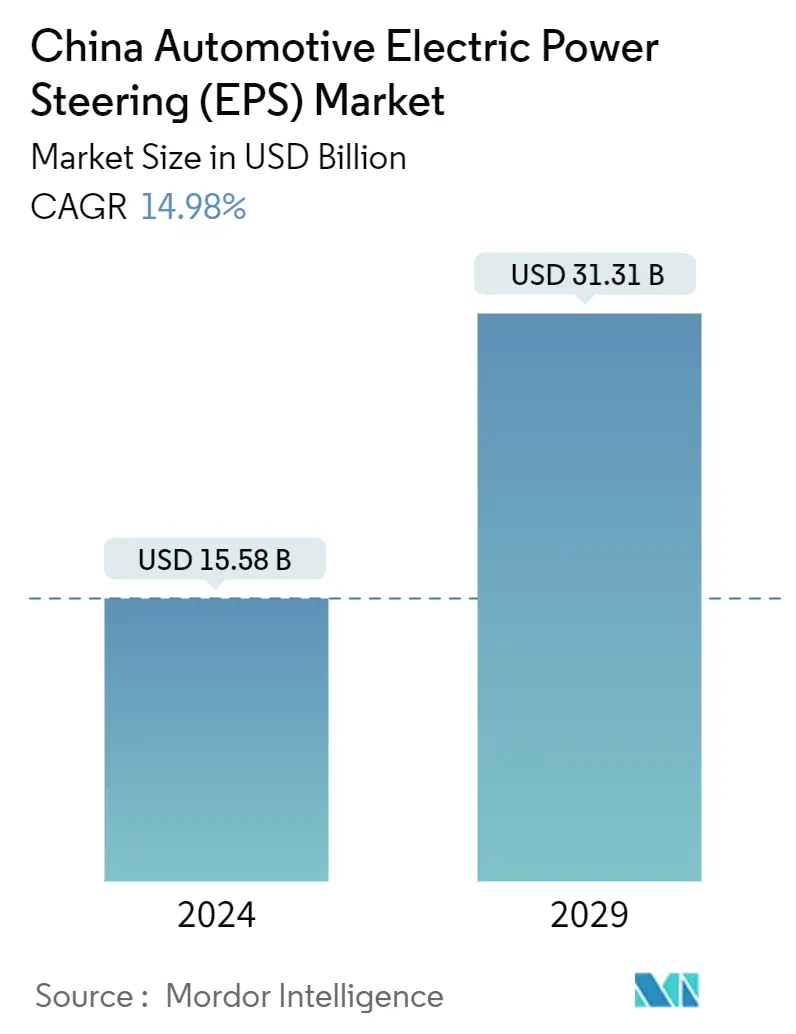Market Size of China Automotive Electric Power Steering (EPS) Industry

| Study Period | 2019 - 2029 |
| Base Year For Estimation | 2023 |
| Market Size (2024) | USD 15.58 Billion |
| Market Size (2029) | USD 31.31 Billion |
| CAGR (2024 - 2029) | 14.98 % |
| Market Concentration | Medium |
Major Players.webp)
*Disclaimer: Major Players sorted in no particular order |
Need a report that reflects how COVID-19 has impacted this market and its growth?
China Automotive Electric Power Steering (EPS) Market Analysis
The China Automotive Electric Power Steering Market size is estimated at USD 15.58 billion in 2024, and is expected to reach USD 31.31 billion by 2029, growing at a CAGR of 14.98% during the forecast period (2024-2029).
- The outbreak of COVID-19 negatively impacted the China Automotive Electric Power Steering (EPS) Market. Several vehicles and component manufacturing facilities worldwide were temporarily shut down, resulting in disturbances in the supply chain. However, the automotive industry started recovering and is expected to continue during the forecast period.
- The Chinese economy is growing, and the disposable income of middle-class consumers is also increasing. This, in turn, reflects positively on the growing demand for vehicles. Over the past five years, owing to the low production costs in the country, vehicle production has gone up drastically. Due to the hike in vehicle production, the electric power steering component market is also gaining momentum. Moreover, the Chinese government has also cut down the taxes on cars to increase cars' sales.
- The market is expected to be driven by the growth in passenger and sports vehicles. However, OEMs have started focusing on implementing cost-effective and strong EPS systems in commercial vehicles (especially heavy tractors and trucks). Hence, there has been widespread utilization of these technologies in various automotive applications.
- Additionally, the rise in sales and demand for luxury cars in the country is also expected to propel the demand for EPS.
